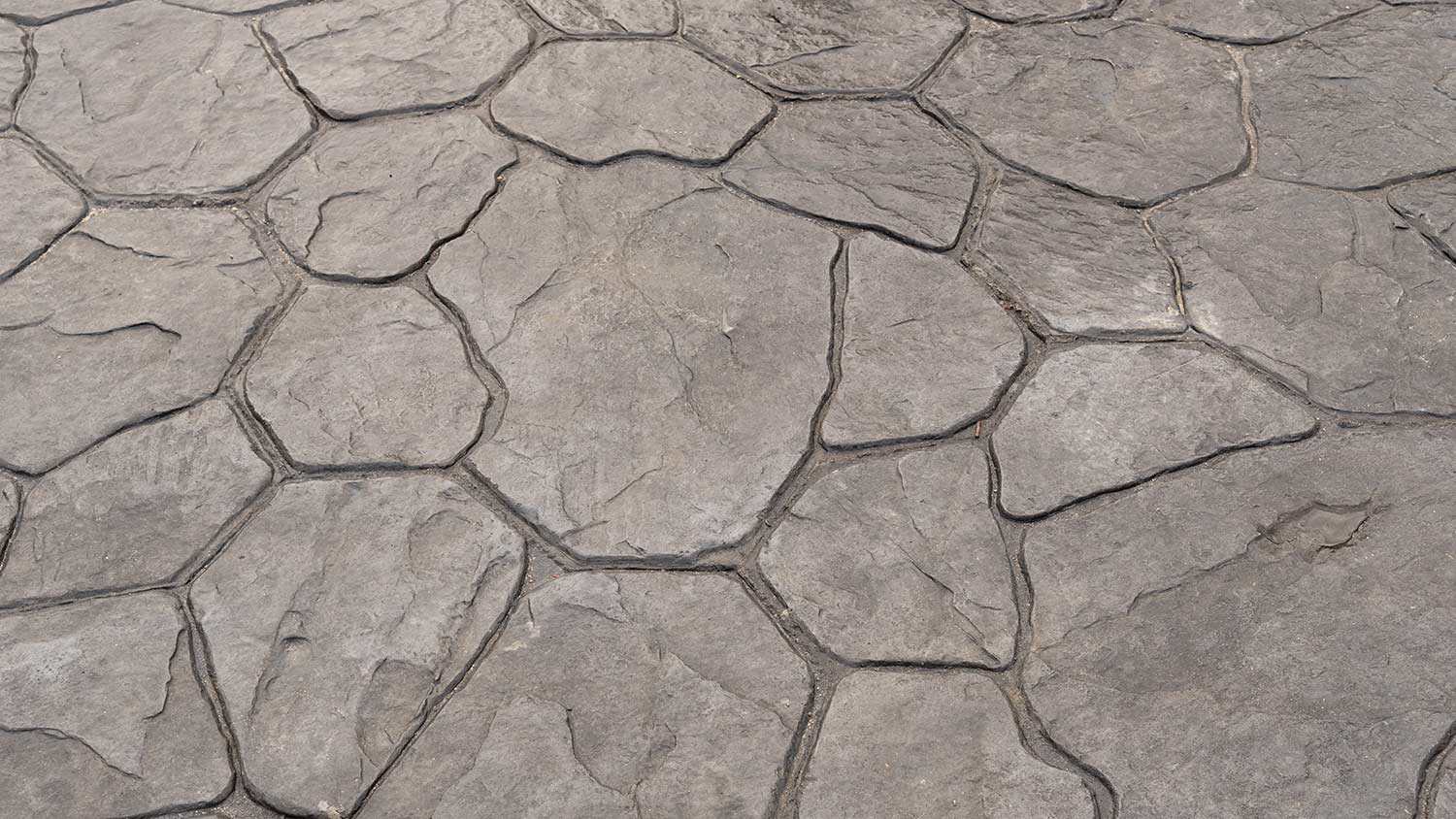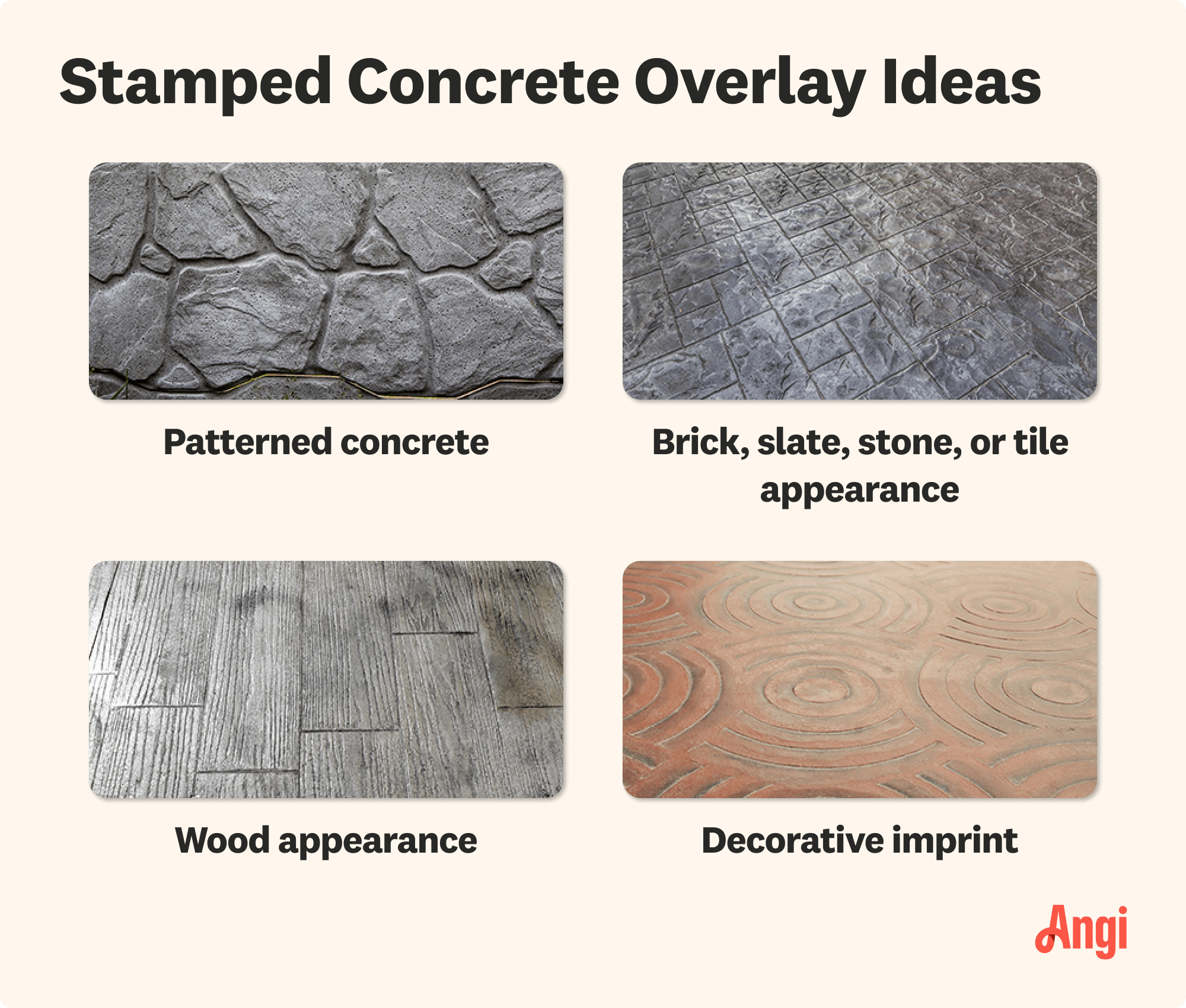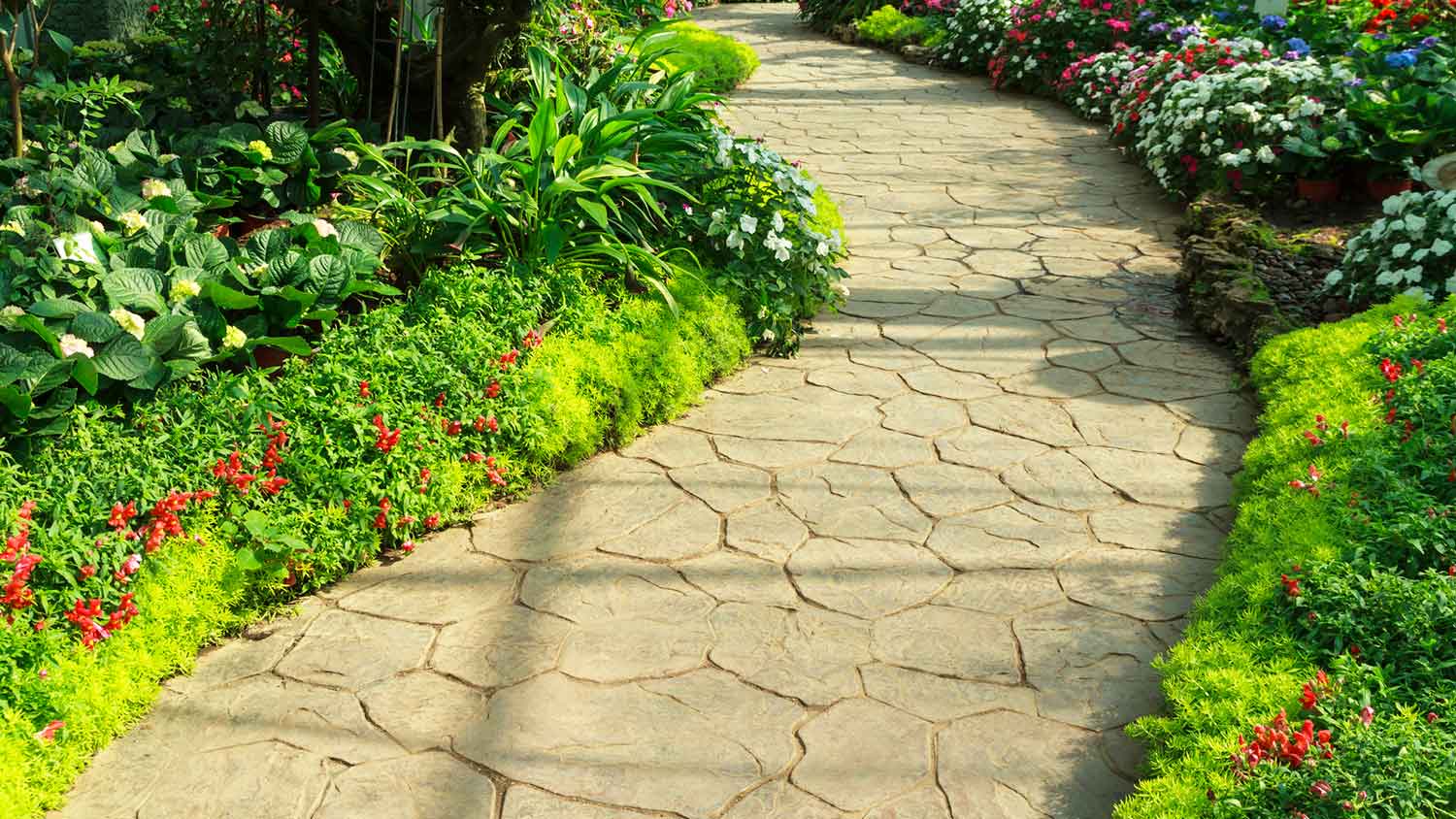
Discover stamped concrete wall cost estimates, including average prices, key cost factors, and tips to help you budget your project with confidence.
Stamp out any questions you may have about this versatile material


Stamped concrete comes in a range of design options.
This material is less expensive than other flooring choices.
Stamped concrete should be sealed every 2 to 3 years.
Concrete is a durable, versatile material, but its plain, industrial look doesn’t always match your home’s aesthetic. Stamped concrete is an easy and budget-friendly way to get the look of brick, stone, or even wood at a fraction of the cost and installation time of other materials. Learn more about stamped concrete, including pros and cons, cost, and how to maintain it so it stays looking as good as the day it was poured.
Stamped concrete is concrete with decorative elements, such as different patterns and colors. These patterns are created with polyurethane, a plastic material, and are often cut into 2-by-2-foot square stamps about an inch thick. They get pressed into the wet concrete to make the desired finish of your patio.
While it has its various pros and cons, stamped concrete is manufactured to satisfy those who need the long-lasting durability of concrete but wish for something more exciting than plain gray slabs. Stamped concrete designs range from very basic to more elaborate styles, often imitating the look of marble, other natural stone, or even wood.
Stamped concrete is a great option for patios, walkways, pool decks, driveways, and even garage floors. Different stamped concrete designs can be used for different features. For example, you might choose a brick pattern for a polished-looking patio or a rough stone pattern to reduce slipping on a pool deck. You can even mix and match patterns for a truly customized look.
Stamped concrete, like anything, has its pros and cons. While it’s affordable and easy to install, it can be susceptible to cracking. Whether its right for you depends on your project and priorities.
From ease of installation to the range of design options available, there are several pros to installing stamped concrete on your patio, walkway, or driveway.

The sky's the limit with stamped concrete. You can choose textures that look like limestone, granite, or other natural stone at half the price, or opt for certain colors like brick red or slate green. The range of selections offered by stamped concrete can open up the design options for your home.
Unlike bricks and tiles, stamped concrete is easy to install. When you use tiles, bricks, or stones, you need to cut them individually ahead of time and lay them in the base concrete, driving up labor costs.
With stamped concrete, you’re just modifying the base concrete using stamps. This lets the local stamped concrete contractor you hire work relatively quickly, only needing two to three days to finish. Compare that to using bricks, pavers, or other materials, which can take upwards of a week to two weeks to install.
On average, you’ll likely pay around $8 to $12 per square foot for the full stamped concrete process, including installation, when you hire a concrete contractor. Other materials often offer a lower cost but have much higher installation costs.
So, while bricks may only cost around $4 to $8 per square foot, this doesn’t include the $5 to $15 per square foot that you’re looking at paying in installation costs.
Stamped concrete maintenance costs tend to stay minimal in the event that cracking happens. Unlike bricks or tiles, where you’ll need to order a specific shape to replace the one that broke, you can always mix a little to fill in the cracks since you’re only working with concrete.
Stamped concrete is simple to maintain, and it tends to last a long time. Cracking will happen no matter what steps you take to prevent it, but you’ll find small imperfections are easy to fix.
The average lifespan of stamped concrete is 25 years. Concrete has the potential of being stronger than bricks, so long as the concrete mix has a one-to-one ratio of cement to sand. This means it might last against erosion longer than other materials.
Nothing is without cons. Stamped concrete might not be the best choice if you need an accessible surface or don’t want to deal with cracking.
Some of the deeply embossed patterns might create an uneven surface that makes furniture wobble and could be hazardous for those in a wheelchair or with limited mobility. Prevent this issue by choosing a smooth pattern with ridges and bumps no more than one-quarter of an inch in height.
The sun’s rays can cause the dyes of surface colorants to fade over time. You can see about having your concrete dyed when it’s being mixed to prevent this.
The most common problem with concrete is cracking. It’s a durable material but suffers in extreme weather; moisture from ice and snow can seep into the tiniest of cracks, expanding as temperatures drop, causing a small crack to become a much larger one. You can seal your concrete every two to three years to try to prevent this, but the reality is it is likely inevitable.
When your stamped concrete becomes cracked, a local concrete contractor will need to patch up the area. With patch-ups, it’s often difficult to match the color of the repaired area to the original.
Stamped concrete is a budget-friendly alternative to materials like bricks, paving stones, tiles, or wood. It can mimic any of those materials at a reduced cost. Although stamped concrete has come a long way in finishes and patterns, a discerning eye will still be able to spot the difference between it and the real thing.
Stamped concrete repairs are more involved than repairing its alternatives. Replacing a broken brick or paver is often as simple as removing the broken piece and replacing it, while concrete requires a more involved repair of the whole slab. Concrete is also more susceptible to cracking than other materials that are laid one at a time since a one-piece slab is affected more by shifting or settling ground than individual pieces.
Once you’ve considered the pros and cons of stamped concrete, you’ll also want to know how to maintain it so it keeps its luster and longevity.
Always check for any weeds starting to pop up. Their roots can damage the concrete and lead to cracking faster.
Sweep off any dirt and grime you find building up before it gets rained on and stains the concrete.
Scrub any stains away with a stiff-bristled brush using dishwashing soap and water.
You can try power washing the surface, but you’ll want to make sure that you don’t ruin your stamped pieces. Use a lower pressure setting or avoid the stamped pieces entirely to preserve them.
Use sand rather than salt on your stamped concrete to eliminate snow and ice. Sand doesn’t tend to erode and crack concrete as fast as salt does.
Seal your stamped concrete once every two to three years so Mother Nature won’t wash away the colors of the stamped pieces.
From average costs to expert advice, get all the answers you need to get your job done.

Discover stamped concrete wall cost estimates, including average prices, key cost factors, and tips to help you budget your project with confidence.

Discover stamped concrete cost. Learn about installation prices, cost factors, and how to save on your stamped concrete project.

Maintaining stamped concrete makes it look slick and fresh, boosting the look and feel of your home. Learn how to clean stamped concrete in this guide.

Stamped concrete maintenance takes a bit more delicacy than other surfaces. Here are seven ways to keep stamped concrete surfaces looking sharp.

A stamped concrete finish can brighten your dull driveway, walkway, or patio. Here are the questions to discuss with a stamped concrete installation pro.

Brushing and stamping are two common concrete finishes. Learn what sets brushed and stamped concrete apart and how to choose between them.